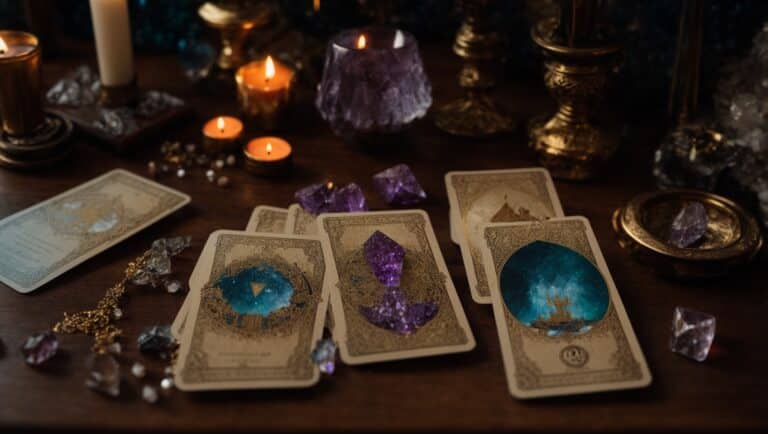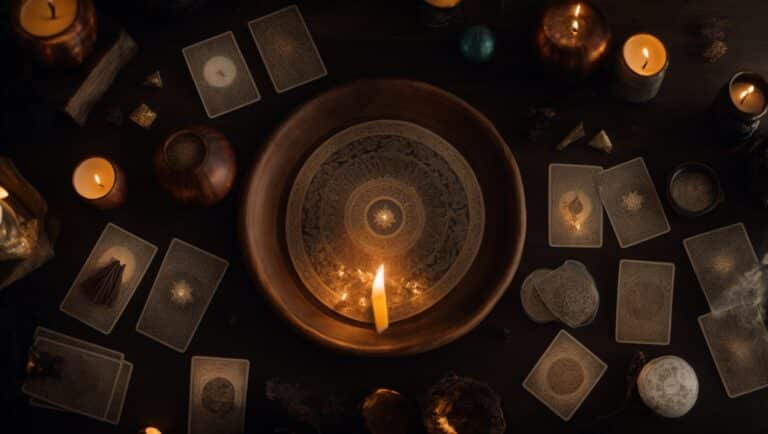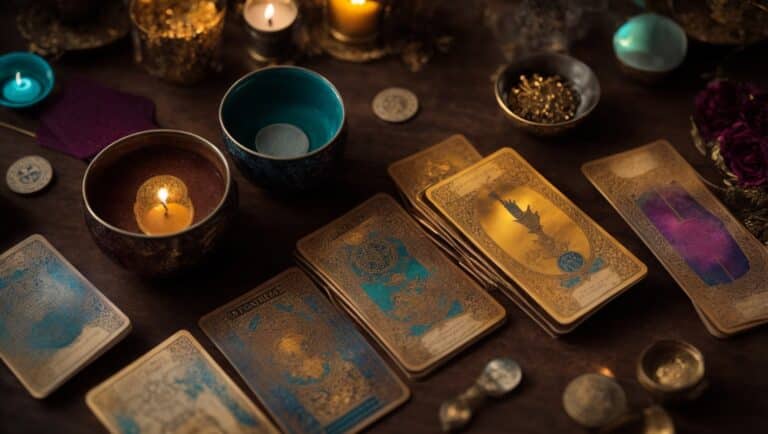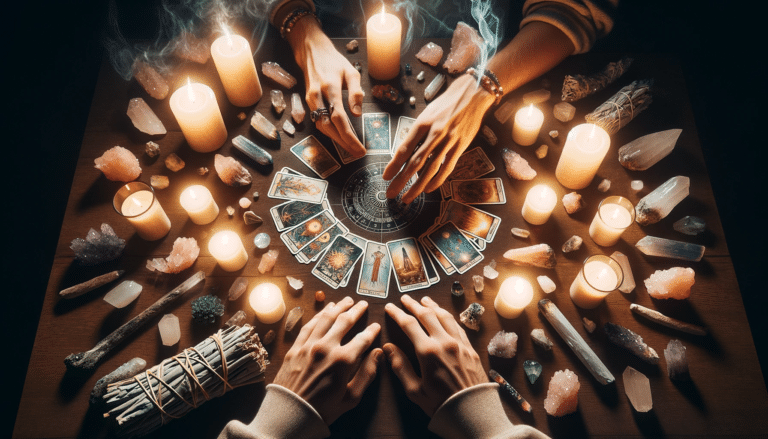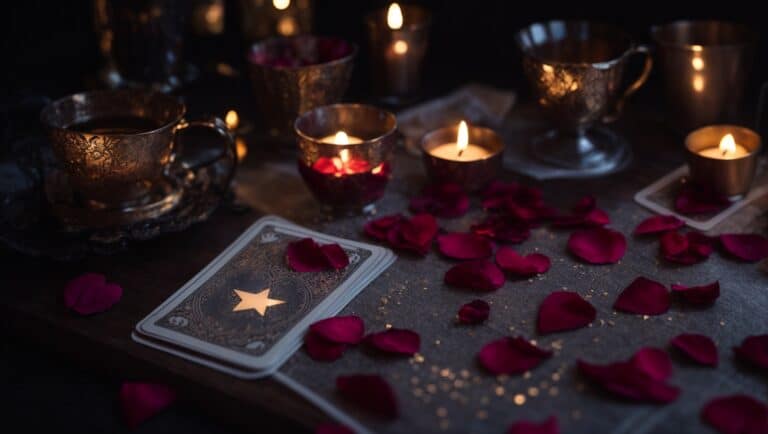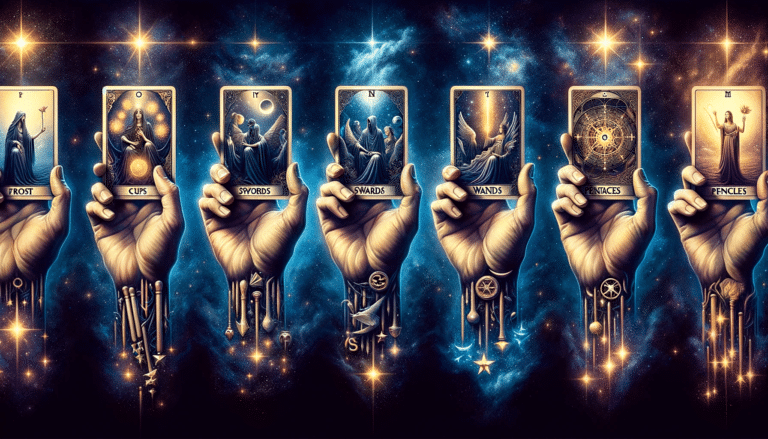12 Tips For Interpreting Tarot Cards For Self-Discovery
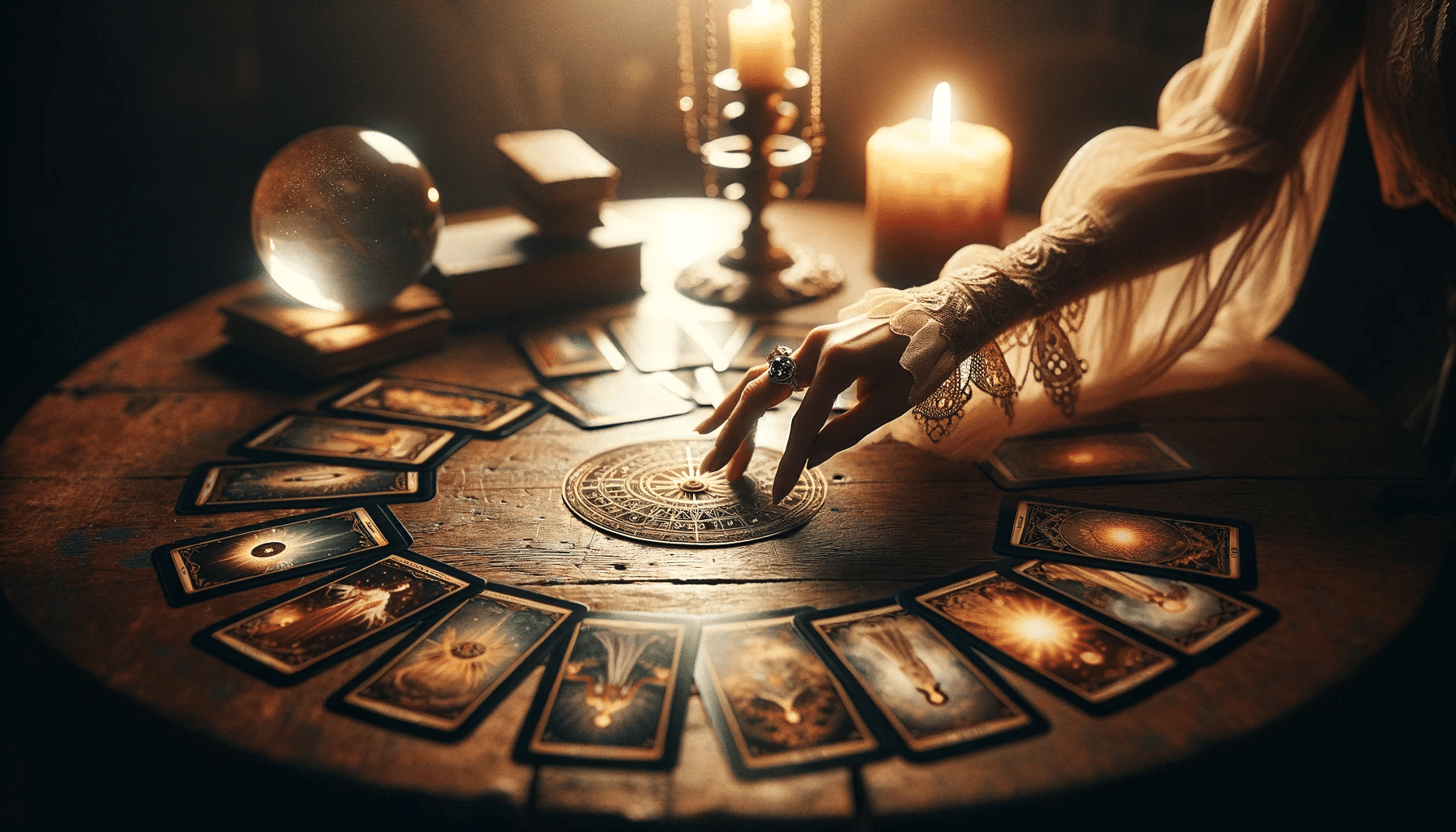
You’re not a mystical guru. You’re just you, looking for self-discovery. But with these 12 essential tips, you’ll master tarot like a seasoned fortune teller.
You’ll understand card meanings, focus on personal intuition, and even establish a connection with your deck.
Tarot isn’t just for those with a sixth sense – it’s for anyone willing to dive into the unknown. So grab your deck, get cozy, and let’s start this journey of interpreting tarot cards for self-discovery together.
Key Takeaways
- Understand the difference between the Major and Minor Arcana cards and their meanings.
- Trust your intuition and let it guide you during readings.
- Create a calm and peaceful environment to enhance your tarot experience.
- Establish a strong connection with your deck through regular practice and cleansing.
Understanding Tarot Card Meanings
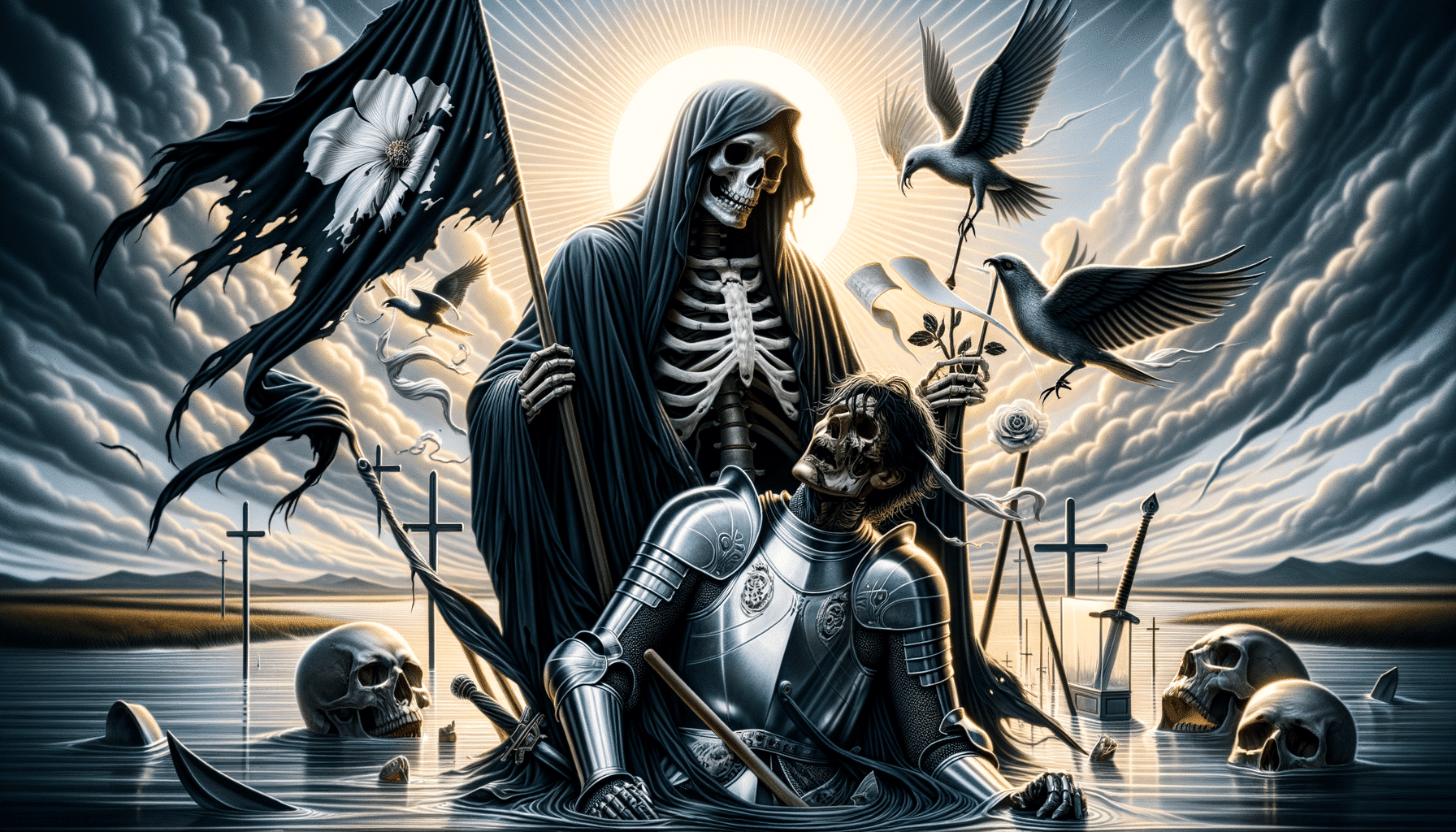
In light of your self-discovery journey, it’s crucial you understand each tarot card’s meaning, so you can interpret your readings accurately. Don’t be daunted by the 78 cards, each with its unique symbolism and story. The key is to approach it with an open mind and a sense of curiosity.
Start by familiarizing yourself with the Major and Minor Arcana. The Major Arcana includes 22 cards, representing life’s karmic and spiritual lessons. The Fool’s Journey through these cards depicts the cycle of life. From the innocent Fool to the enlightened World, each card signifies an important life phase or experience.
The Minor Arcana, on the other hand, consists of 56 cards divided into four suits: Cups, Pentacles, Swords, and Wands. They reflect daily trials and tribulations. Cups deal with emotions and relationships, Pentacles with material aspects, Swords with challenges, and Wands with actions and initiatives.
Check out our Tarot Decks here…
Focusing on Personal Intuition

While you’re getting the hang of the tarot card meanings, it’s equally important to trust and focus on your personal intuition. Tarot cards are simply tools; they’re not magic. Your intuition is the real magic and it’s the key to unlocking the deeper messages of the tarot. Trusting your intuition can feel a bit daunting at first, especially if you’re new to tarot. But don’t worry, it’s a skill that you can develop with practice.
Here are some tips to help you focus on your personal intuition:
-
Take a moment to quiet your mind before you start a reading. This can help you tune into your intuition and discern its voice from your everyday thoughts.
-
Pay attention to your body. Your intuition often communicates through physical sensations.
-
Don’t rush the reading. Take your time and let your intuition guide you.
-
Be open to unexpected insights. Your intuition might surprise you with its wisdom.
-
Practice regularly. Like any skill, the more you practice using your intuition, the stronger it becomes.
Learn about more Tarot Fundamentals here…
Creating a Calm Environment

Building on your intuition, creating a calm environment is another critical step in using tarot for self-discovery. This tranquil space serves as the foundation for your journey inward, helping you focus and tap into your subconscious. But how can you create such a space? Here are three key elements to consider:
| Element | Description | Benefits |
|---|---|---|
| Lighting | Soft, natural light or candlelight. | Creates a serene ambiance, reduces eye strain. |
| Sound | Quiet, or soft instrumental music. | Minimizes distractions, promotes relaxation. |
| Aroma | Incense or essential oils like lavender or sandalwood. | Stimulates senses, aids in relaxation. |
Learn even more secrets of Interpreting Tarot Cards here…
Establishing a Connection With the Deck
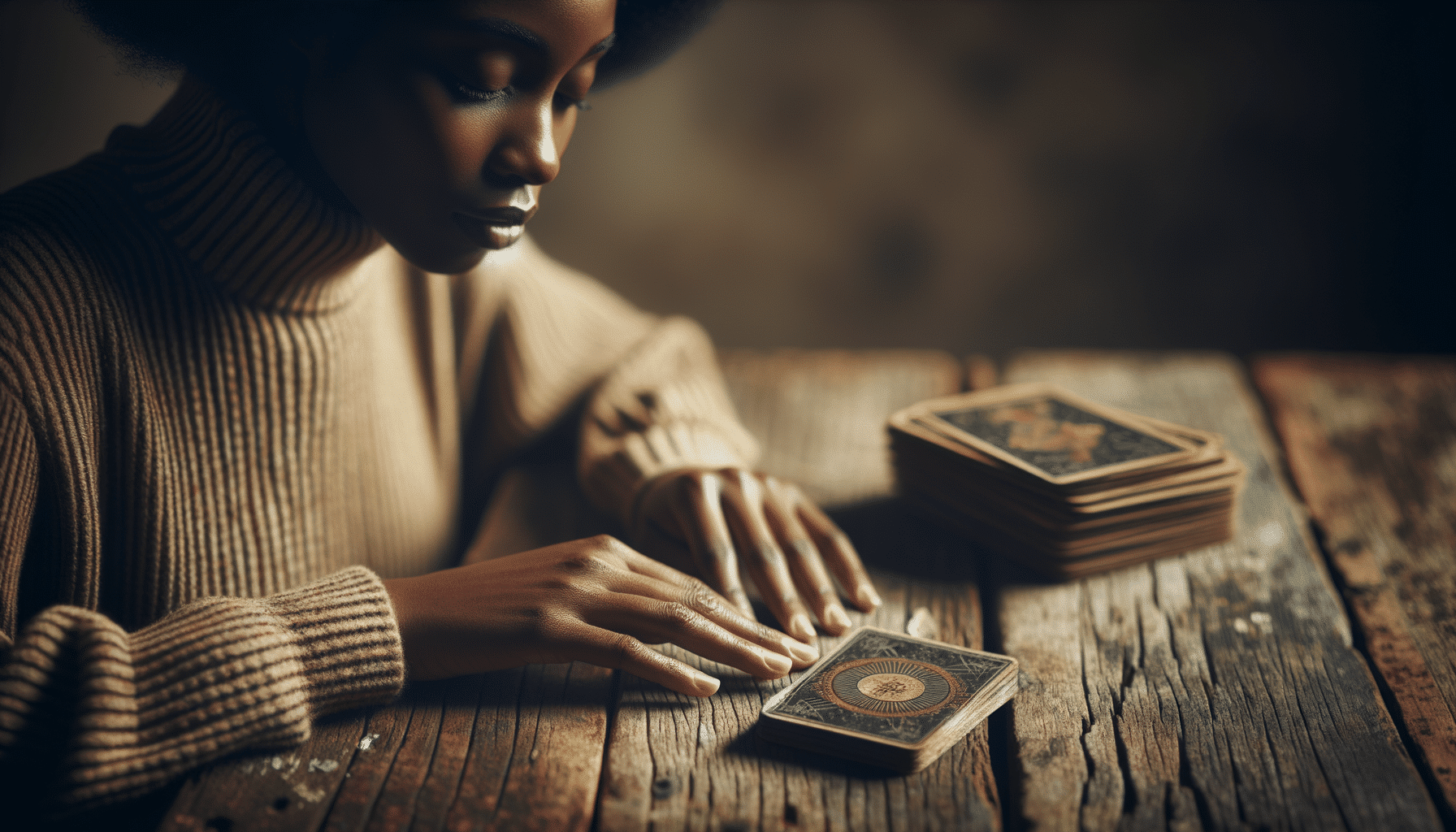
Once you’ve created your serene space, it’s time to deepen your understanding of tarot by establishing a personal connection with your deck. This link is vital as it ensures that the readings you perform are more precise and meaningful.
Here are five steps to help you connect with your deck:
- Spend time with the deck: Familiarize yourself with each card, its imagery, and meaning.
- Cleanse the deck: Use sage, incense, or sunlight to clear away any previous energy.
- Infuse it with your energy: Hold the deck in your hands, meditate with it, or even sleep with it under your pillow.
- Shuffle the deck with intention: As you shuffle, think about the guidance you seek.
- Practice regularly: The more you use the deck, the stronger your connection becomes.
Remember, tarot is a tool for self-discovery. It’s not about predicting the future, but understanding your inner self better. By establishing a strong connection with your deck, you’re not just reading the cards; you’re interpreting the reflections of your soul.
Be patient with yourself as you navigate this journey of self-exploration and spiritual growth.
Choosing a Spread Layout
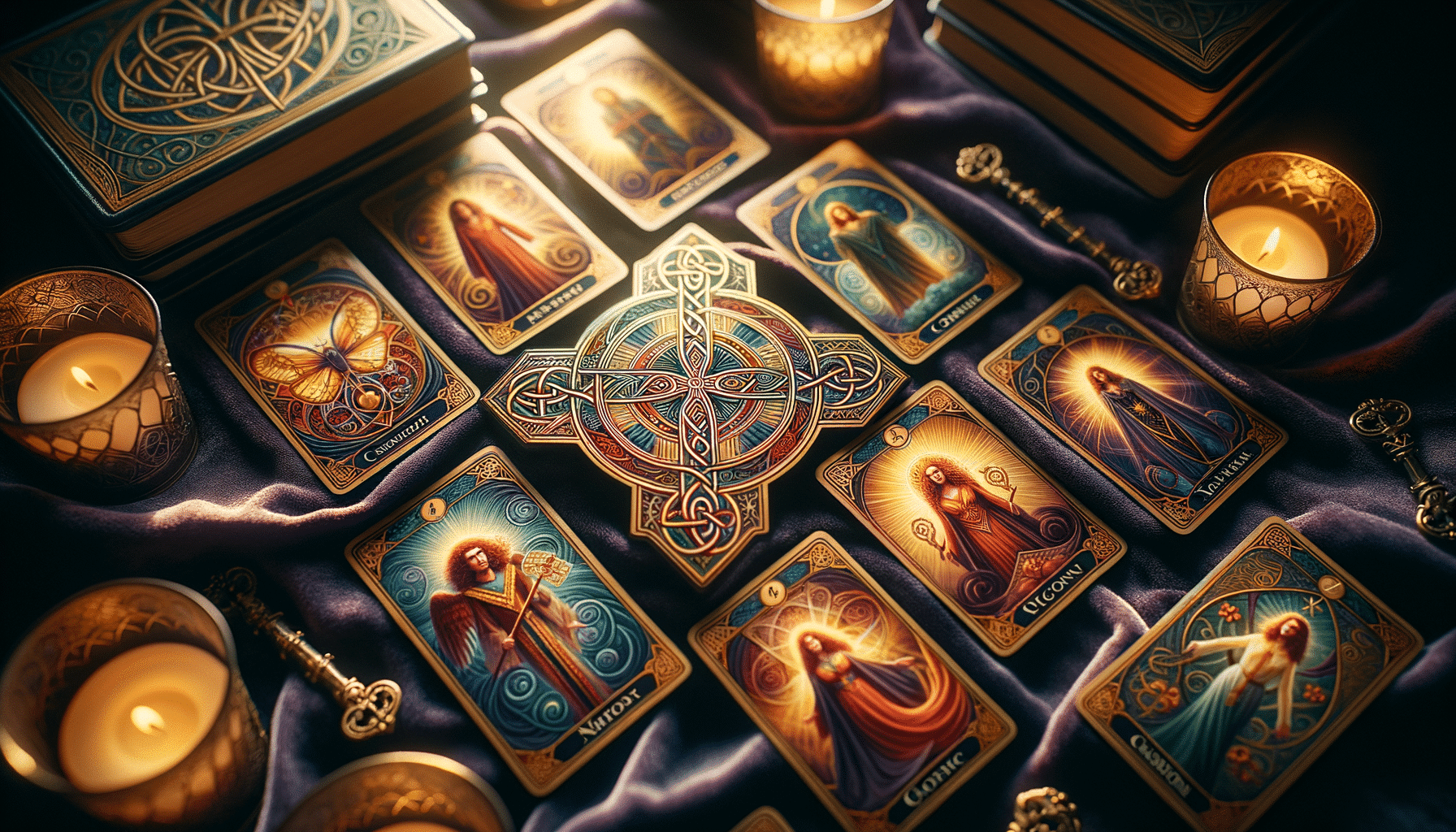
After forging a solid bond with your deck, your next step in the journey of tarot-based self-discovery is selecting a spread layout that resonates with your intentions and questions. A spread layout is the arrangement of cards you’ll use during a reading. It’s like a map guiding you through the story your cards are telling.
Consider your question’s complexity when choosing a spread. Simple questions might need a simple three-card spread, while complex issues could benefit from a more detailed Celtic Cross spread. You don’t have to stick to traditional layouts either; feel free to create your own to suit your unique needs.
Here’s a simple example of a three-card spread:
| Past | Present | Future |
|---|---|---|
| Card 1 | Card 2 | Card 3 |
Card 1 represents the past influences related to your question. Card 2, the present, shows the current situation. Card 3, the future, provides potential outcomes or guidance.
Interpreting the Major Arcana
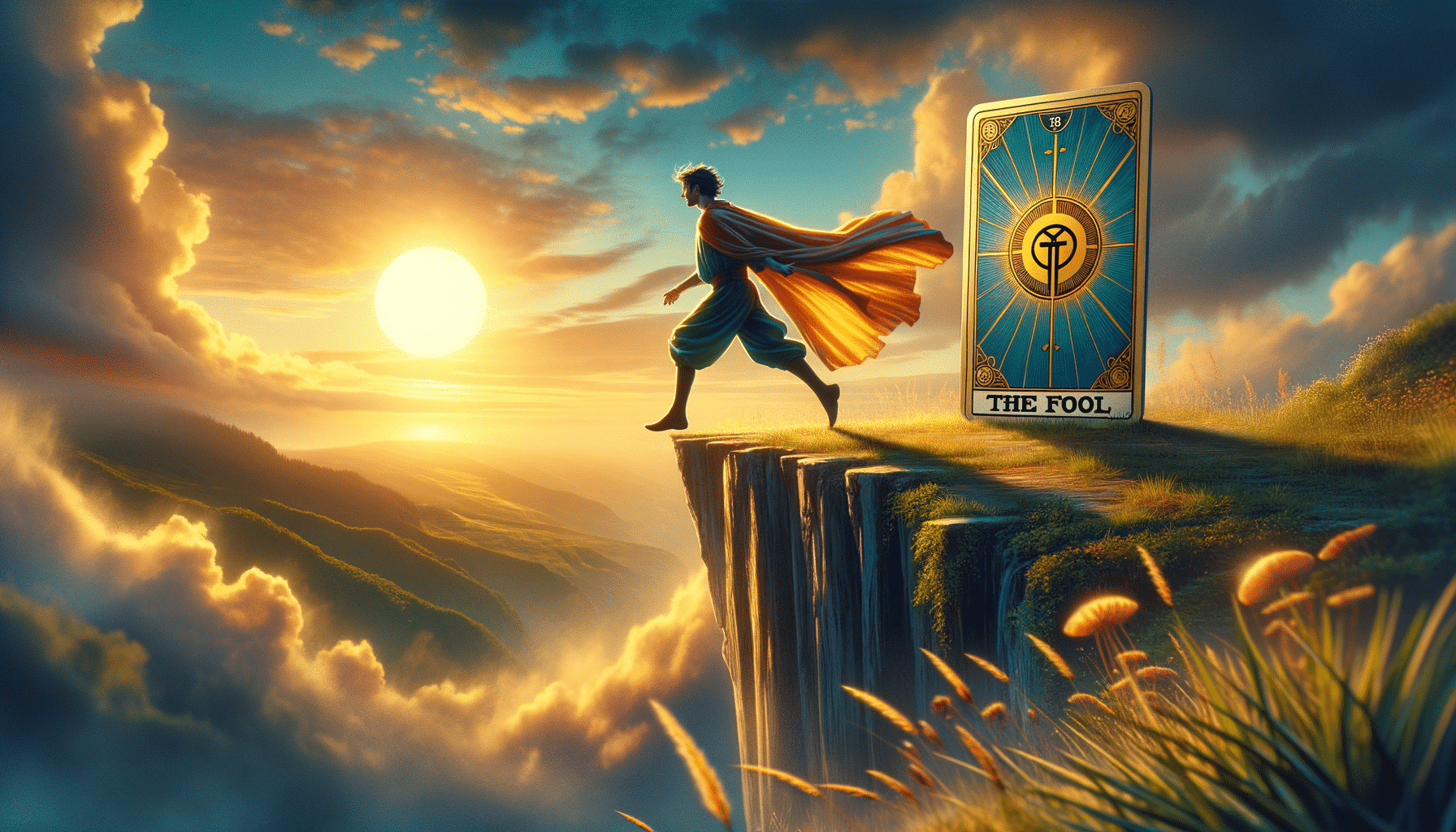
Now, let’s move on to interpret the Major Arcana.
You’ll need to understand the symbols of these cards and what they mean personally to you.
Don’t worry, it’s not as daunting as it sounds, and we’ll guide you through it.
Understanding Major Arcana Symbols
In your journey toward self-discovery, understanding the 22 symbols of the Major Arcana can offer invaluable insights. Each card represents a stage in life’s journey, an experience, or an archetype.
The Fool symbolizes new beginnings and the risk of the unknown.
The Magician represents the power of transformation and manifesting your desires.
The High Priestess stands for intuition, mystery, and the subconscious.
The Empress embodies motherhood, nature, and creative potential.
The Emperor denotes authority, structure, and control.
By examining these symbols and their meanings, you can gain a deeper understanding of your personal journey and the obstacles or opportunities that may lie ahead.
Now, let’s move on to explore the personal relevance of the Major Arcana in your life.
Major Arcana Personal Relevance
With your basic understanding of Major Arcana symbols, it’s time to delve into their personal relevance and how to interpret them in your own life.
Each card in the Major Arcana represents a stage in your life journey. For instance, ‘The Fool’ indicates a new beginning, ‘The Lovers’ suggest choices in personal relationships, and ‘Death’ signifies transformation or change. When a Major Arcana card appears in your reading, it’s spotlighting a key aspect of your experience.
Reflect on its symbolism in relation to your current situation. Embrace the wisdom these cards offer, using them as tools for introspection and growth.
Now that you’ve learned about interpreting the Major Arcana, let’s move on to understanding the minor arcana cards.
Interpreting the Minor Arcana
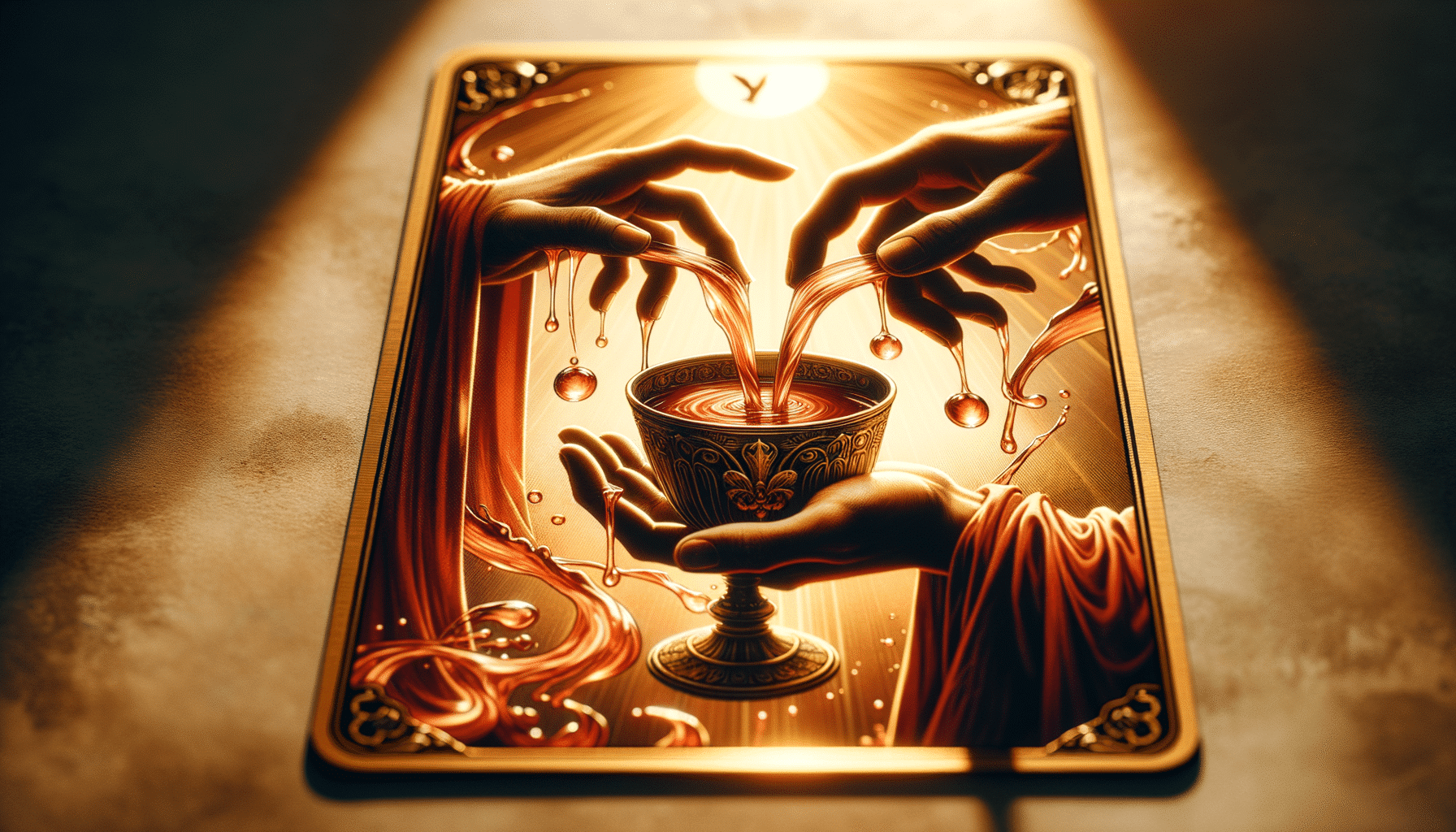
You’ll unlock deeper layers of self-awareness by accurately interpreting the Minor Arcana in your tarot deck. This portion of the deck, with its 56 cards, represents the details of your daily life and minor influences. It’s crucial to understand each suit’s symbolism to grasp the full message.
Here are some key pointers:
- Wands symbolize creativity, action, and initiative. They’re linked to your spirit and personal growth.
- Cups represent emotions, intuition, and relationships. They’re tied to your heart and emotional well-being.
- Swords stand for thoughts, attitudes, and beliefs. They’re connected to your mind and intellectual capacity.
- Pentacles denote material aspects, work, and practical affairs. They’re associated with your body and physical existence.
Lastly, remember that the numbers on the cards also carry meanings. For instance, Aces imply beginnings, while Tens suggest completion.
Interpreting the Minor Arcana isn’t just about knowing these meanings, but about feeling the energy of the cards and connecting it with your intuition. With practice, you’ll begin to recognize patterns and themes that resonate with your life’s unique journey.
Key Symbols in Tarot Cards
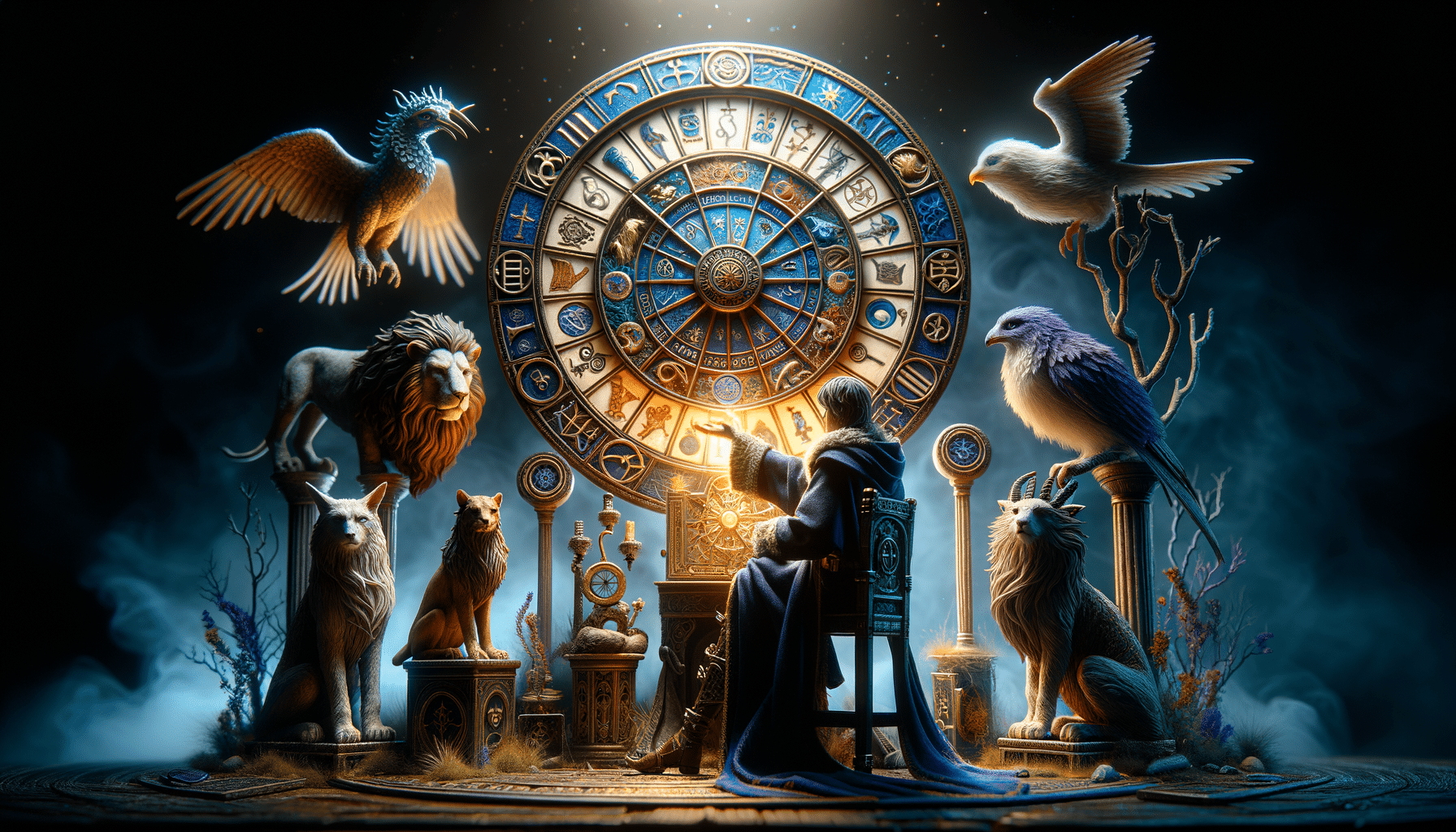
While understanding the symbolism of each suit offers a basic grasp of your tarot deck, it’s equally important to delve into the key symbols that appear on the cards themselves. Symbols in tarot are visual representations of universal concepts or life experiences, each carrying a wealth of meaning. As you study each card, notice elements like animals, objects, numbers, and colors.
For instance, the presence of a lion often suggests strength or courage, while a sword might represent conflict or a call to action. Colors, too, play a vital role. Red typically signifies passion, action, or anger, while blue may denote calmness, communication, or emotional depth. Similarly, numbers aren’t arbitrary; they align with numerology’s principles, where each digit has a unique vibration and meaning.
Understanding these symbols will deepen your relationship with your deck, allowing more nuanced readings. But remember, there’s no definitive interpretation for each symbol. Much of tarot reading revolves around intuition and personal resonance. Trust your instincts as you explore the rich tapestry of tarot symbolism.
Next, let’s turn our attention to the role of reversed cards in your readings.
The Role of Reversed Cards
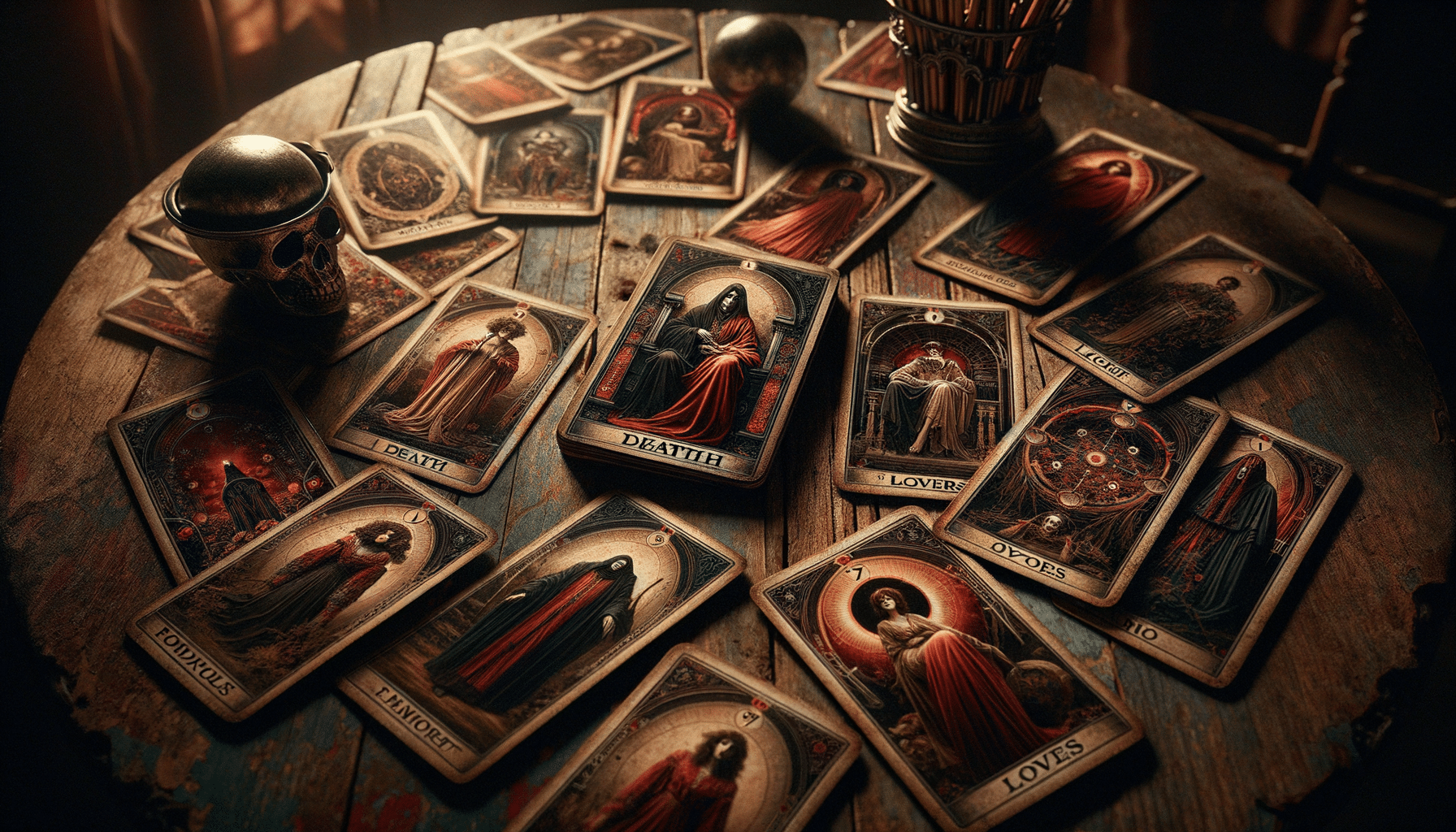
In your tarot journey, understanding the role of reversed cards is another crucial step towards insightful self-discovery. You might initially view these upside-down cards as negative or confusing, but they’re simply another facet of the tarot’s rich language.
Reversed cards don’t necessarily mean something bad. They can symbolize an internal, personal realization, a delay, or a different perspective on a situation. It’s all about how you choose to interpret them. Here are some guidelines:
- Don’t fear reversed cards. They’re not there to scare you but to provide more depth to your readings.
- Try to see them as a mirror to your inner world. They often hint at what’s happening within you.
- Reversed cards can point to potential blockages or challenges. They can be a call to action.
- They might be showing you that something in your life isn’t flowing as it should.
- Use them as an opportunity for deeper introspection. They often reveal the hidden or subconscious aspects of ourselves.
Reading Cards in Context
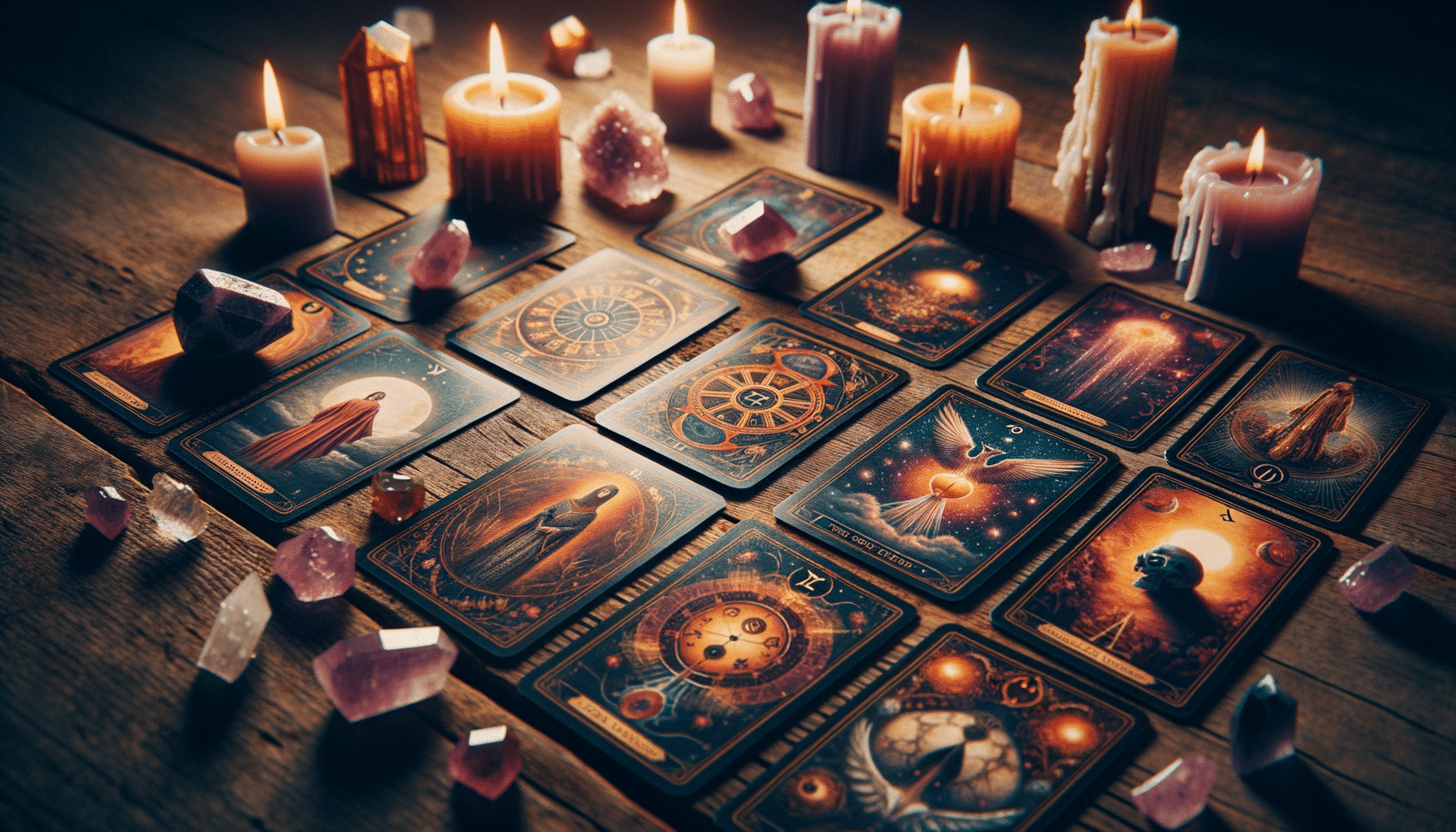
Moving on from understanding reversed cards, it’s essential to also get a grip on how to read tarot cards in context. Each card’s meaning can change depending on its position in the spread and its surrounding cards. It’s a bit like reading a book, you need to understand the whole sentence, not just a single word.
Consider this simple 3-card spread:
| Position 1 | Position 2 | Position 3 |
|---|---|---|
| Past | Present | Future |
Your ‘Past’ card might be the Three of Cups, signifying past celebrations. The ‘Present’ could be the Five of Pentacles, implying current financial struggles. The ‘Future’ card, the Wheel of Fortune, suggests upcoming change.
Reading these in context, you’re not just looking at financial struggles but understanding them as a deviation from past happiness. The Wheel of Fortune gives hope for a change in your financial situation. So, don’t get bogged down by individual card meanings. It’s the story they tell together that provides real insights. This is the art of reading cards in context. It’s a skill you’ll develop with time and practice, so don’t be discouraged if it seems complex at first.
Reflecting on Personal Reactions

After you’ve honed the skill of reading cards in context, it’s crucial to reflect on your personal reactions to each tarot card and the overall reading. This step is often overlooked but it’s essential in deepening your understanding of the Tarot and yourself. When you react strongly to a card, it’s a sign to delve deeper and explore why.
Here are some tips to help you reflect effectively:
- Keep a tarot journal. Write about your thoughts, feelings, and immediate reactions after each reading.
- Allow yourself to be honest. Don’t suppress your reactions, even if they’re negative or confusing.
- Take note of recurring cards. These can reveal significant patterns in your life.
- Don’t rush the process. Reflection takes time. Let your impressions simmer before making any conclusions.
- Share your reflections with trusted friends or a tarot community. They can offer valuable perspectives.
Keeping a Tarot Journal
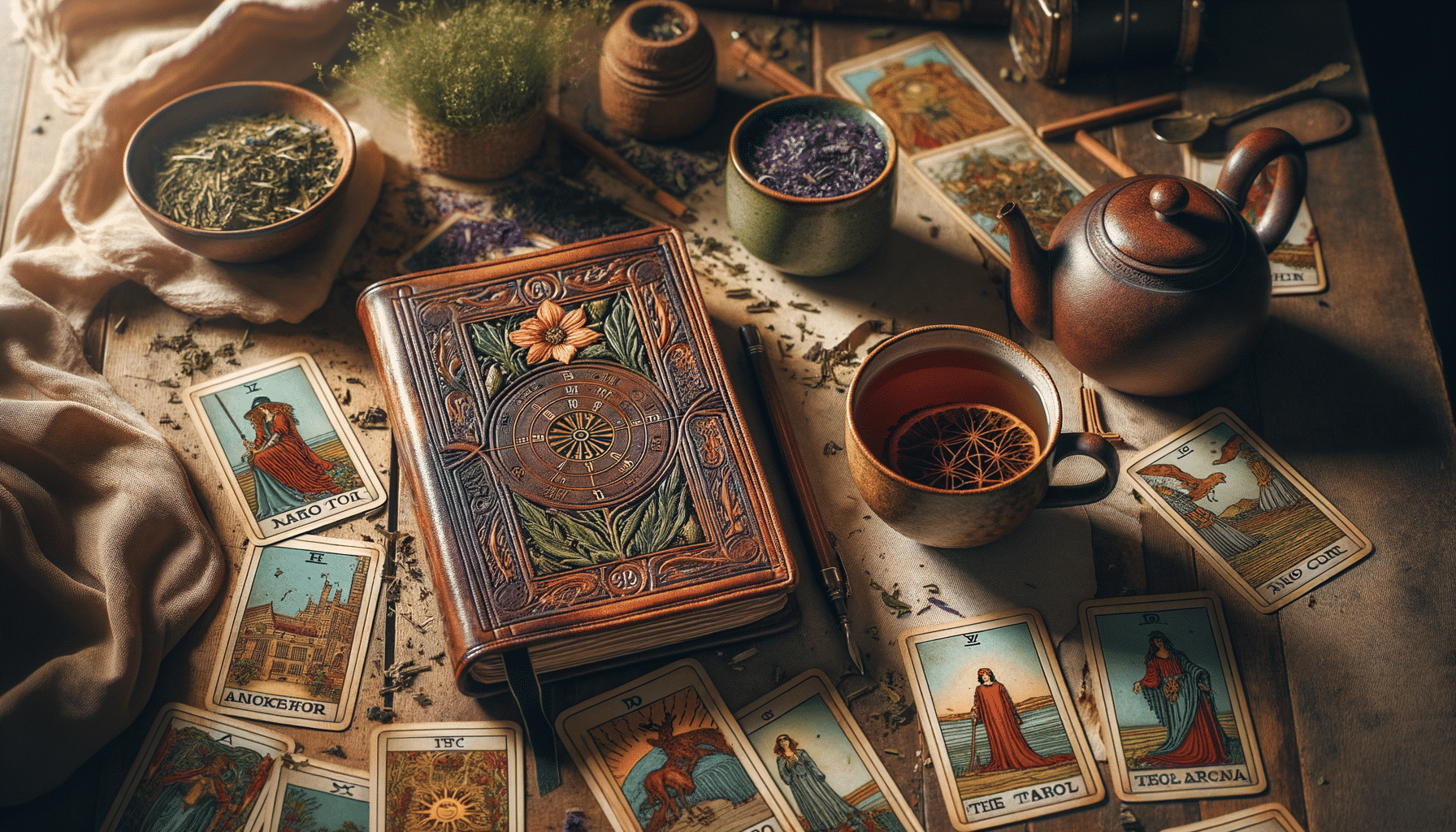
Maintaining a tarot journal, as mentioned earlier, is a powerful tool for capturing your personal reactions and reflections during your journey of self-discovery. It’s a practical way to track your progress, record your insights, and revisit your past readings for deeper comprehension.
With a tarot journal, you gain a clearer understanding of the cards and your connection to them. You’ll start noticing patterns in your readings and your reactions, offering you valuable insights into your personal growth.
Now, let’s break down some of the key components of a tarot journal:
| Tarot Journal Component | Explanation |
|---|---|
| Date and Time | Recording when you did the reading provides context, helping you understand your mindset at that time. |
| Question Asked | Noting down the question you asked allows for reflection later on. |
| Cards Drawn | Write down not just the cards you drew, but also your initial reactions to them. |
| Reflections and Insights | After some time has passed, revisit your reading and write any new insights or reflections. |
Frequently Asked Questions

Can Tarot Cards Help Me Make Major Life Decisions, or Should I Only Be Interpreting Tarot Cards For Self-Discovery?
Absolutely, tarot cards can assist in decision-making. But remember, they’re a tool for guidance, not a set-in-stone answer. They’ll illuminate possibilities you may’ve overlooked, but ultimately, you’re in control of your choices.
How Can I Cleanse My Tarot Deck From Negative Energies?
To cleanse your tarot deck from negative energies, you’ll need to smudge it with sage, bury it in salt, or leave it under the moonlight. It’s also helpful to store it in a special place.
Are There Any Specific Rituals or Traditions to Follow Before a Tarot Reading?
Absolutely! Rituals before a tarot reading are as numerous as stars in the sky. Most importantly, you’ve got to set your intentions, cleanse your deck and create a sacred space. Find what resonates with you.
Can Tarot Card Readings Predict My Future With Absolute Accuracy?
No, tarot cards can’t predict your future with absolute accuracy. They’re tools for introspection and guidance, not fortune-telling. They can help you explore possibilities, but can’t determine definite outcomes.
Is It Possible for Someone Else to Touch My Tarot Deck or Is It Considered Bad Luck?
It’s not necessarily bad luck for someone else to touch your tarot deck. However, it can disrupt your personal energy connection to the cards. So it’s usually advised to keep your deck to yourself.
Conclusion
So, you’ve begun your tarot-based journey to self-discovery. Remember, each card’s meaning is a piece of your personal puzzle, a symbol waiting to be deciphered. Trust your intuition, embrace the calm, and build a unique bond with your deck.
Your spread layout, the reversed cards, and the context – they all tell your story. Reflect and journal your insights.
Your tarot journey is a path of self-discovery; a mirror reflecting your soul’s secrets. Happy exploring!
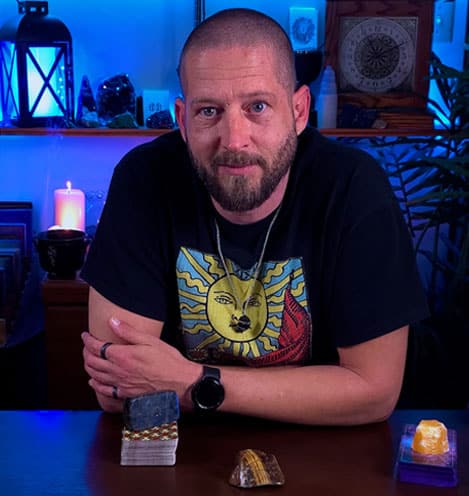
About The Author – Allen Hill
Allen Hill, the force behind Unknown Truth Tarot, has a YouTube following 6-times bigger than the population of his hometown, Miamisburg, Ohio. From his spiritually rich blog on Tarot and crystals to his role as CEO of The Unknown Truth Tarot Metaphysical Shop, Allen’s passion for the metaphysical shines through.
A master Tarot reader and “crystal junkie,” Allen is also a devoted dad to Dylan, 10, and Destiny, 24. When he’s not immersed in the world of Tarot and crystals, he enjoys poker and video gaming sessions, often humorously outplayed by Dylan.
Follow Allen on Twitter, Instagram, Facebook, TikTok, and subscribe to his Unknown Truth Tarot YouTube channel to join him on a journey of spiritual growth and self-discovery.

